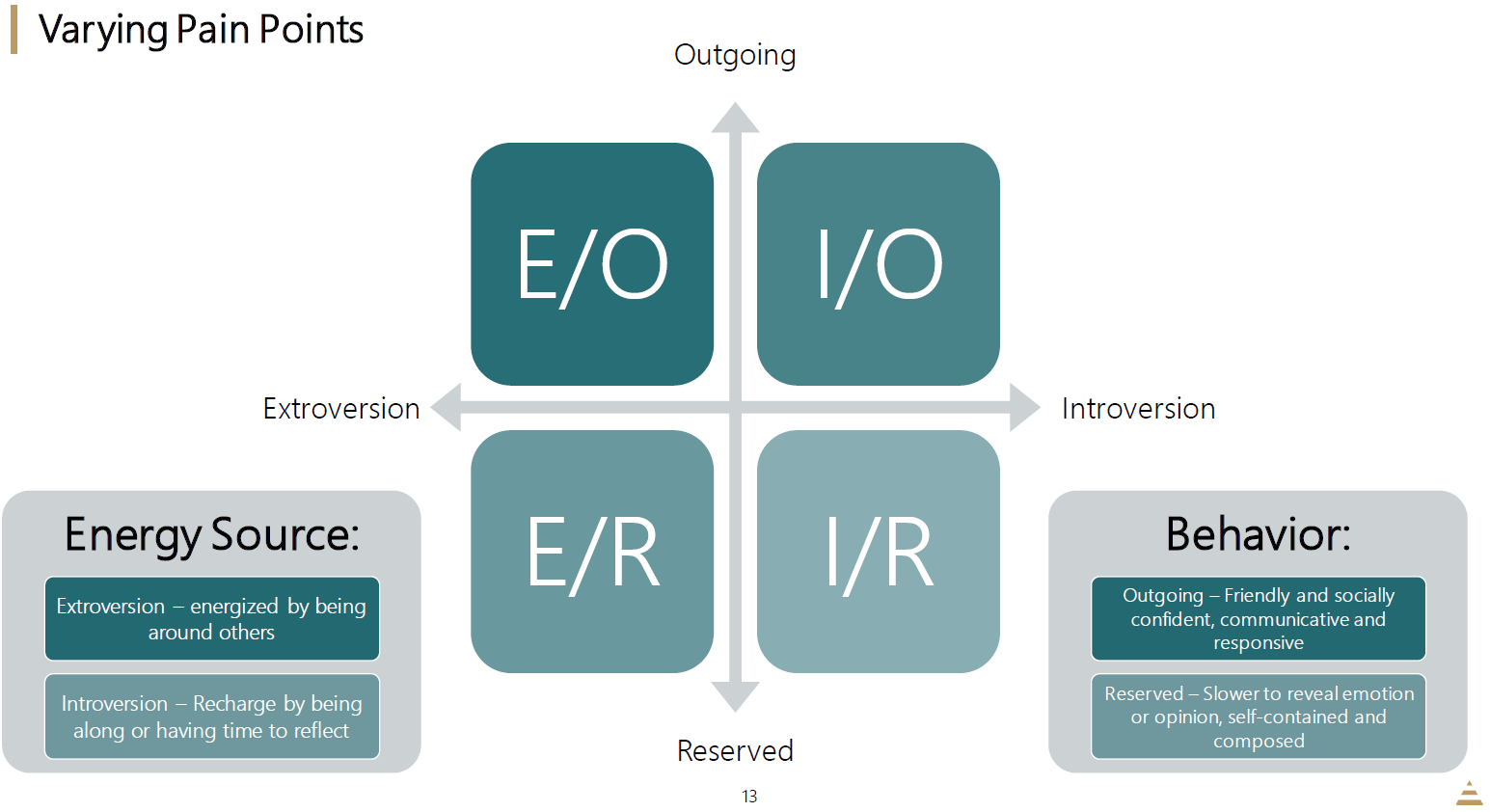
Managing Teams While Working Remotely
- Published
- Apr 20, 2020
- Topics
- Share
Working remotely presents numerous challenges. Managing teams while working remotely is a key challenge that leaders within any organization will face. In a recent webinar EisnerAmper hosted titled Best Practices for Overseeing Remote Staff, Natalie McVeigh, a director in the firm’s Center for Family Business Excellence, discussed these challenges along with what leaders can do to minimize obstacles for working remotely.
McVeigh said leaders influence the company’s culture, morale, and function simply by being ‘present.’ “How are you showing up each day as a leader in your organization? How are you responding to employees during this time?” she asked.
“When people come together, research shows that within 15 minutes, there is an emotional harmony that comes to the group,” she said. “This helps everyone be better performers as we maintain emotional stability. Uncertainty impacts all of us emotionally and most of us have never been in more uncertain times.”
One solution she suggested was to pick a date things are believed to get back to ‘normal.’ “Our brains respond worse to uncertainty than to bad news,” she said. “Picking a late date allows the ‘bad news’ to happen and limit uncertainty.”
“Leaders have to recognize the challenges that exist for us all while working from home,” she said. “Waking up, having a routine, getting dressed and making connections with the members of our teams all help with our ‘presence.’”
Since the onset of the COVID-19 pandemic, McVeigh also presented on Risks and Opportunities in Transitioning to a Remote Workforce, where she discussed common misconceptions when employees work from home (WFH).“Often, the thought is that employees are less productive and not as connected,” she said. “However, INSEAD research has shown that remote workers are 40% more productive, 37% no difference, and 23% less productive.”
McVeigh said one challenge remote work presents is that it is quite good for solo work, but not great for work that requires collaboration. This is creating more time spent by managers and employees in collaborative activities to achieve the same results that take less collaborative time in the office. Studies show that this collaborative time has increased by 50% or more. However, she said one challenge is that, while in the office, a lot of collaboration is done from habitual activities throughout the day (i.e., sending an email to a colleague and then following up in person in the halls later), which can’t be replicated at home.
Managers and leaders have to remember to engage employees. “Follow-up more than normal, without crossing into micromanaging” McVeigh said. “It’s important to stay connected. Accountability and trust are important. Team members need to feel free to engage with leaders. Leaders should make generous assumptions, communicate encouragement and acknowledgement of work done, and provide clarity with information, but not overloading employees with more than they can handle. It also helps to sprinkle in questions, humor, and a bit of fun. Transparency is important. Communicate, don’t add to the ‘noise,’ and be transparent.”
McVeigh emphasized the importance of colleagues having the feeling of ‘affiliation (feeling and belonging). “It’s important to create structure but also maintain flexibility,” she said. “Everyone is impacted differently, and finding ways to engage and flourish will help us all continue to be contributors. There is a gene that is activated when we talk to each other, and that has a positive impact on us all. Without that interaction, our stress levels increase. Leaders and managers must take this into consideration as we deal with members of our teams. We want to increase oxytocin, so that everyone can be better contributors to the team.”
Ways to do this are: include, appreciate, and show understanding. “As much as you can, say ‘we,’ instead of ‘I,’ to help increase oxytocin among our team members,” McVeigh said. “Other chemicals come into play during times like these. Cortisol leads to distrust and stress. Things that increase cortisol in our messaging to team members include dictating, being right, and not including. It is important for leaders to remember that we have an impact on one another. Any increased stress activates cortisol in each of us. We need to counteract that with positive interactions which, in turn, reduce stress.”
Since the COVID-19 pandemic, research has shown it is common to have anxiety, grief, and stress. “We need to manage all of these emotions and feelings,” McVeigh said. “They also lead to experience boredom, guilt, and low energy.”
She emphasized numerous studies have shown that around 45% of one’s waking hours are based in habit. “Various things are costing us and our employees’ energy, which is having a negative impact on us all,” she said. “As leaders, we need to make sure we are centered and be the emotional contagion for our employees. Everyone is impacted differently, and it is important to remember that. As mentioned earlier, listening and understanding are critical right now for leaders.”
The webinar also discussed was how one can increase his or her emotional energy and ‘spark joy.’ ”We need to focus on retaining our sense of self with all of the changes in the world around us,” McVeigh said. “There are things we can do in our home offices to help with energy such as adding plants to your office, surrounding ourselves with bright colors, adding motivational posters or decorations, and listening to music. We can host a virtual coffee with a friend or a colleague (not just virtual happy hours). It’s important to declutter your home to create a positive environment. Surprise yourself: Find ways to change things to keep things from becoming stagnant.”
“As flight attendants remind us ‘put on your oxygen mask first,’ you need to take care of yourself first to be able to project that calmness to your team,” she said. “Understand this is the new normal. We don’t know what will happen in the future, but we can address what’s happening today. Being clear about where we are today and our plan is much more effective than blind optimism. Remember: over-communicate. In the office, we have all sorts of non-verbal communication including hearing cues around us. We need to engage these parts of our brain at home. We can utilize virtual communication methods to make these connections. Over-communicating also gives the team information so they don’t have to make things up, filling in speculation with fact.”
She added: “It’s also critical to remember compassion and flexibility in these times. There’s a difference between compassion and empathy. Empathy is both accuracy and compassion. Compassion is allowing space for people to have their own experience. Acknowledge their experience and listen. Each person has a different work from home experience and it’s important to recognize this. We all have different levels of challenge with physical distancing. Share tips with your colleagues, but don’t manage how they have to be used. Allow yourself not to over control and remember: Be flexible.”
“Another thing leaders must remember is the different personality types of our colleagues,” she noted. “Some people are introverts and some are extroverts. Some are reserved and some are outgoing. There’s a spectrum.”

The final theme presented in the webinar was virtual connection tips. McVeigh said leaders should work to find ways to create experiences like being in the office, not just happy hours, but also coffee or lunch. “Try not to be too agenda-based with some of these,” she suggested. “It can start with ensuring periodic check-ins with our colleagues. Also, stop ‘giving time back’ if a meeting ends early. Use that time to make connections. Take YOUR time and slow your pace to help calm people. Find ways for everyone to be involved when using these virtual tools such as using chat function or polls. Groups that listen to each other are ten times more intelligent than the smartest person in the room. LISTEN and share. Summarize what you heard – rephrasing: ‘What I hear you saying is...Is there more with that?’ helps with communication.”
Managers should also work on connections by leading with their own experience including anecdotes, struggles, and triumphs. McVeigh suggested having more frequent one-on-one meetings and check in how things are going at home. Also, when closing meetings and check-ins, go through good ideas or things each person are grateful for. Also, evaluate when to use e-mail, messaging, or video. E-mails are good in situations where in person communication follows up, but in the current situation, people may need to use messaging and video more often than before. E-mail is an asynchronous form of communication. The context may be lacking, and people cannot follow up in person later as if they would in the office. She said video is useful, but to make sure everyone is set up for that. The ultimate goal is to try to recreate the in person experience.
She added for collaboration efforts, it is important for leaders to try to find a block of time where the team and work synchronously in three-to-five-hour blocks. “Create small successes with your team and create touch points. Don’t just touch base when going over review comments or things missed.”
Most importantly, she emphasized that during times like this, managers must consider the touchstones that existed before the ‘new normal’ that they could bring back to create a sense of consistency. In addition, she said it is important to ensure that employees can ‘turn off’ at the end of the day. “Research shows that burnout isn’t from working long hours as much as it is from the sense of an inability to ‘turn off,’” she said. “Also remember to honor holidays and weekends. These are psychological anchors we have all become used to. Managers can also point to techniques for reducing stress: breathing techniques, mindfulness, meditation, prayer, and mind-body movements.”
“What we know right now is that nothing is certain,” she concluded. “Managers have to adapt and show a strong presence for their teams. Managers have to find ways to create positive energy and reduce stress. Consistency and communication is key. We can get through this with the right tools, attitude, and leadership.”
What's on Your Mind?
Start a conversation with Natalie
Receive the latest business insights, analysis, and perspectives from EisnerAmper professionals.












